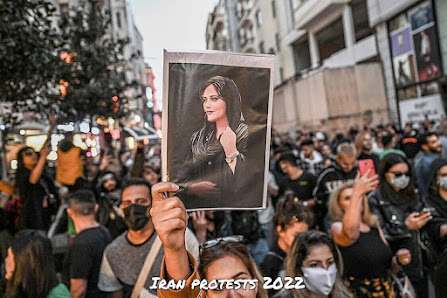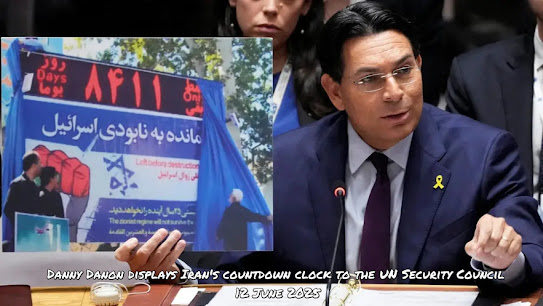Published in the Jerusalem Post, 30 June 2025
In any consideration of a possible regime change in Iran, one potential leader stands symbolically head and shoulders above anyone else – the man born to be Shah of Iran and who, for the first nineteen years of his life, was its Crown Prince, namely Reza Pahlavi, now 65 years old.
When his father, faced by an army
mutiny and violent public demonstrations, went into voluntary exile on January
17, 1979 young Pahlavi was a trainee fighter pilot at a US air base in
Texas. Two weeks later Ayatollah Ruhollah Khomeini, the spiritual leader
of the Islamic revolution, took control of the country. Neither Pahlavi
nor his father ever set foot in Iran again.
To end his own exile has been
Pahlavi’s main purpose in life for the past 46 years. Though living in the West
under the constant threat of assassination, he has campaigned constantly for
the overthrow of the rule of the ayatollahs and to return home to help create a
new modern, liberal democracy that respects human rights, freedom and
equality.
In pursuit of his aim he leads a
body called the National Council of Iran for Free Elections
(NCI). The Council, an umbrella group of exiled opposition
figures, seeks to restore Pahlavi to the leadership of Iran, either as Shah or
as president. Meanwhile it acts as a government-in-exile, and claims
to have gathered "tens of thousands of pro-democracy proponents from both
inside and outside Iran."
On June 23, in a press conference
held in Paris, Pahlavi called for an end of Iran’s theocratic government.
In its place he proposed establishing a constitution based on the separation of
religion and state, with liberty and equality for all citizens.
“I am stepping forward to lead
this national transition,” he said, “not out of personal interests, but as a
servant of the Iranian people.” Promising a national referendum on the
nature of a future democratic Iran, he called on the “patriotic members of our
armed forces” to “join the people”.
Pahlavi is not intent on
masterminding either a military or a popular coup. He appears to believe
that a spontaneous popular uprising will topple the regime. His starting
point is the burgeoning disillusion with the regime among the Iranian people.
When Iran’s then-incumbent president, Mahmoud Ahmadinejad, was declared the winner of the presidential election in 2009 with 63% of the vote, the Iranian public was outraged. The whole tenor of the campaign had suggested he was about to be ousted by a large majority. Two of the other candidates, Mir-Hossein Mousavi and Mehdi Karroubi, alleged widespread electoral fraud and vote rigging, and called on the Iranian people to protest.
The mass demonstrations that broke
out across the country gave rise to what became known as the Green Movement, a
symbol of unity and hope for those demanding political reform.
The crackdown by the IRGC (Islamic
Revolutionary Guard Corps),was brutal. Thousands were detained, while
reports emerged of severe abuse, torture, and even deaths in detention.
Some protesters were killed in the streets. Dozens of detained protesters and
reformists were paraded in televised trials to intimidate dissenters.
That is what might be expected
following any attempt at regime change in Iran that was less than meticulously
planned, fully prepared, and executed with complete professionalism.
It took eight years before
economic hardship, government corruption, and anger at the nation’s costly
support of foreign proxies of the regime led to another outburst of public
anger and resentment. One notable development marked this episode.
Among the slogans chanted by protesters across the country and reported in the
media were, for the first time: “Bring back the Shah”.
Then on September 13, 2022 Mahsa
Amini, a 22-year-old Iranian woman, was arrested by Iran’s infamous morality
police. Her nominal offense was that she was wearing her hijab
“improperly”. Mahsa was taken to the Vozara Detention Centre. Three
days later she died.
The Iranian nation erupted in protest.
Thousands took to the streets in cities across the country. Very soon dissent expanded beyond the severe dress code imposed on women and enforced by the morality police. Soon the protesters began targeting the regime itself and the Supreme Leader. Posters with the slogan “Death to the Dictator” began appearing, and videos posted online showed demonstrators burning images of Khamenei and calling for the return of the Pahlavi dynasty.Last month, on May 19, a new wave of protests erupted triggered by widespread anger over poverty, corruption, and economic mismanagement by the regime. They were marked by coordinated actions directly challenging the government’s handling of the economy and social welfare, and demonstrators chanting slogans such as “Death to Khamenei” and “Death to the dictator” were recorded.
The regime’s suppression of these
mass demonstrations was brutal. Security forces confronted protesters
with tear gas and batons. Police, backed by IRGC personnel, used force to
disperse crowds, and in some cases bulldozed protest sites. There were
widespread arrests and a dramatic increase in state executions – at least 175
people were executed during May.
What forces does Pahlavi have at
his beck and call to counter such ruthless suppression? The regular army
remains nationalist and traditionally non-political. He may enjoy quiet
sympathy within it, but there is no visible sign of pro-Pahlavi coordination,
and he seems to have nothing like the infrastructure needed to lead or support
a coup.
The regular police (FARAJA) is
poorly paid and sometimes shows sympathy with protesters, especially in urban
centers, but there is no indication of coordination with external figures like
Pahlavi.
Reformists and pragmatists inside
the Islamic Republic have been marginalized since 2020, but even they do not
associate publicly with Pahlavi. Many fear that aligning with an exiled figure
would mean accusations of treason and possible imprisonment. As far as
the business sector is concerned, those tied to the regime (via IRGC contracts,
bonyads, or patronage) will not defect unless the system is collapsing.
Finally, and perhaps
crucially, Pahlavi’s team has no direct media infrastructure inside the
country. Internet censorship, intimidation, and disinformation severely
limit his ability to organize or communicate with supporters on the ground.
His most effective channels are diaspora satellite stations and social media,
which are limited in reach due to filtering and surveillance.
In short, there is no confirmed underground or internal network working directly for, with, or under Pahlavi. There are grassroots networks inside Iran: feminist, student, labor, and ethnic groups. These movements are fragmented and internally suspicious of external figures, even when monarchism isn’t the issue.
The available
evidence seems to indicate that Reza Pahlavi lacks the internal support
structure and organizational mechanisms required to coordinate a successful
uprising from within. He seems to hope that one will occur, and that he
will be called upon to help develop a democratic government afterwards.





.jpg)



.jpg)










.jpg)







.jpg)
.jpg)


